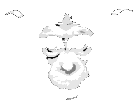


Apollo 11
Apollo 11 was timed so that on landing in what would be christened ‘Tranquility Base’ it would be lunar morning’. At the time of launch the moon was a thin crescent and the landing area was in darkness, but by the time they landed it was in daylight.
The image on the right shows a section of the moon at launch (top), at the time they entered lunar orbit (middle) and the landing itself (bottom). The dot marks the location of Tranquility Base.
One of the first views of the lunar terminator can be seen in magazine U. The early part of this magazine consists of photographs of the solar corona, which were carried out before LOI.
They are followed by images of the moon clearly taken at high altitude, as the curvature of the horizon (where it is visible) is very marked. AS11-
The ‘claptrap’ is likely to refer more to the TV camera, as they did perform a broadcast at 19:52, but during that transmission Collins specifically refers to the Foaming Sea (Mare Spumans), of which there are several photographs prior to our terminator view. These references are at 78:40, so I will suggest a time of around 20:00 GMT for a terminator prediction. Let’s compare that prediction with the Apollo photograph.
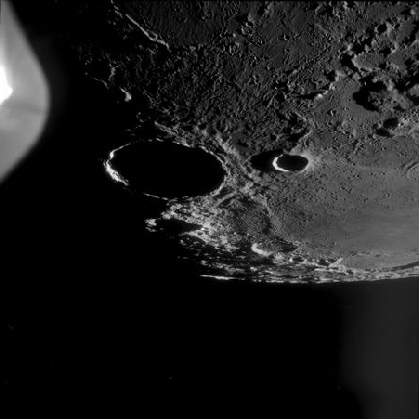
Next in the magazine is a series of photographs (starting with AS11-
Again, the position of the terminator recorded by Apollo images is in the right place at the right time.
A short while after these photographs were taken there is another circularisation burn, and the crew start to move equipment to the lunar module. Magazine R (which was taken to the surface)records another couple of views of the terminator over the landing site around this time, and we have additional evidence in the magazine that allows us to determine fairly precisely when it was taken.
We can do this mainly because of satellite photographs of Earth’s weather. Immediately prior to our terminator photograph, we have AS11-
We also have a definite time recorded in the transcript for the Apollo 11 crew flying over the area photographed, with Aldrin stating at 82:56:
“Yes, I got it beautiful -
This would put the time of the photograph at around 00:30.
The photograph in question is shown below left, with the LRO view over the site at the same time shown below right.
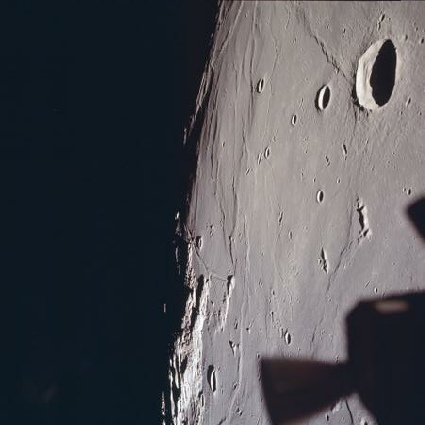
While Armstrong and Aldrin head into the LM and then to the surface Collins continues to photograph the surface from orbit, and we can try and establish a chronology for those photographs using the terminator position.
The first example comes from magazine T, AS11-
There are no specific references as to when this photograph, and its companions taken at the same time, were taken, but there may be clues in a passage in the mission transcript. At between 86:08 and 86:17 (during which they were on the far side), there are several references made to taking photographs. LOS on this orbit was at 85:42, with AOS due at 86:38 this would put them roughly in the right location for the Korolev basin -
Below left is Google Moon with the Apollo image superimposed (along with AS11-
The first thing to note is that Korolev W is much darker in this view than in the previous image shown of it, so it must have been taken later in the mission. It should also be obvious that the terminator line does appear to be in the appropriate place. It could perhaps be positioned nearer with the photographs taken on the next orbit, but the period after the next pass over the near side is a rest period, and there are no communications records to verify if anyone took photographs during this time.
The next view of a terminator from orbit comes well after Aldrin and Armstrong have left Collins to his own devices. It comes in magazine P, and is a part of a long continuous sequence of photographs pointing towards the lunar horizon. This sequence has been made into a long animation, available here.
The sequence contains an Earthrise, and this has been determined as occurring at about 21:45 on the 20th. We also have Collins describing his view of the landing site to Charlie Duke at 104:41, or 22:13 so we know he must have passed over Tranquility by this time. For this reason, I’ve set the LRO at 22:00 on the 20th, and compared it with AS11-
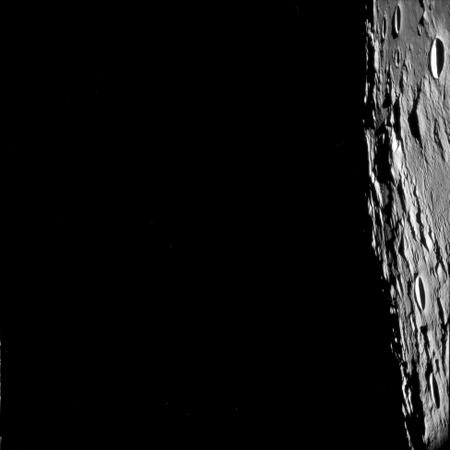
The crater in the top right of the Apollo image is Dionysus, westwards of which (towards the terminator) are Cayley and Whewell, followed by the eastern crater rim of Tempel, across which the terminator cuts.
At the bottom left is Theon Junior, and west of this the terminator line follows the western rim of Lade E crater.
As can be seen in the VMA view, this is exactly what would be expected at the time Collins overflew the terminator during this pass. Not only do we have a view of Earth that shows the exact weather patterns and landmasses that should be visible when Collins took his series of photographs of it, we have the terminator in exactly the right place as yet more corroborating evidence that he was where he was supposed to be: in orbit around the moon on the 20th of July 1969.
A little later in this same magazine we have more images of the lunar surface passing from darkness into light over near Tranquility Base. Let’s make an assumption that these were taken on the next orbit and work out when this would have been. The next AOS time is 106:11, or 23:43, the same time as EVA preparations were started. LOS on this orbit was at 107:23 or 00:55 on the 21st, so we know that the terminator will be passed somewhere between those two. I’ll pick a time of 00:15 on the 21st, as there is much discussion either side of this time as to where to look for the LM.
The oblique nature of the photograph I’ve chosen (AS11-
Is this what you can see on the LRO view?
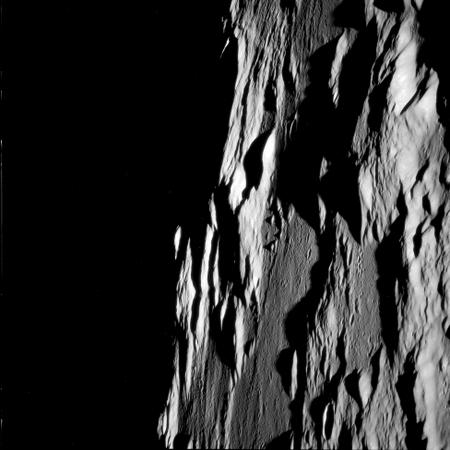
Yes. It is.
Next in this magazine is another series of terminator images, this time of the far side, and it seems a reasonable assumption that they have been taken on the same orbit around 45 minutes later.
In the ones on the very edge of the terminator it is difficult to be sure about features, and the first one about which we can be certain is AS11-
The image below left shows overlaid photographs and place markers for this cluster of images, with approximate the terminator line for 01:00 superimposed on it, on the right is the LRO view. In the centre is a cropped and brightened version of AS11-
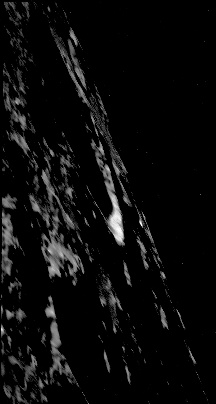
The view from the Apollo photograph is looking across towards Congreve crater from a position on the west of Icarus, although it is conceivable that other locations are possible. The locations of the overlays are, however, beyond doubt and are very obviously the western rim of Icarus. The length and depth of shadows confirms that these are near terminator photographs, while AS11-
The location of the terminator is consistent with the time suggested for these images, and it is also worth pointing out that Korolev is now completely in darkness.
We have one more terminator collection to examine, this time in magazine O. In amongst other lunar images there is a small cluster of photographs taken around the Hipparchus region. A few of these photographs (AS11-
Below left is the Google Moon with overlays, and a yellow line marking the position of the terminator at 16:30 on the 21st. This is a fairly arbitrary time chosen because it puts the terminator running through Seeliger crater at the top of the images. Below right is the LRO version.
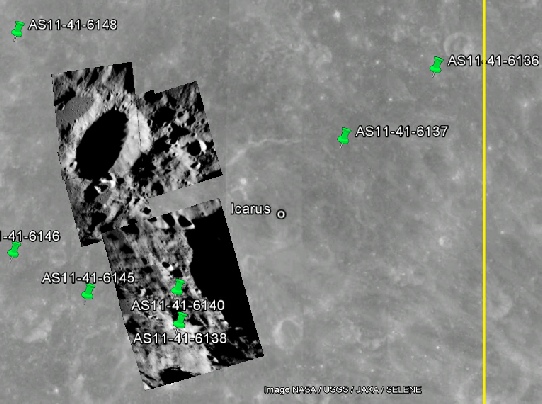
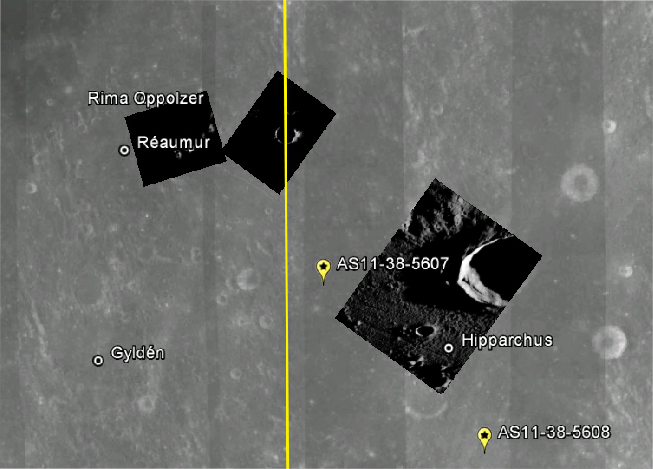
16:30 on the 21st translates to roughly 123:00. There are no specific mentions of photography at this time, but 1 hour later we do have Collins being given more precise information as to the location of the landing area. We also know from medical records that prior to 121:00, Collins was asleep and Hiparchus would be darker, and not long after 124:00 they begin preparations for the LM’s return to orbit. While 16:30 is not therefore the most precise time, it is not unreasonable, and much later than this would have seen Seeliger lit more clearly.
The final shots of the moon used here part of a long series of images evidently taken after TEI, which occurred at just before 05:00 on the 22nd. The last in this sequence is AS11-
Apollo 12
Apollo 12 starts with a similar issue from the final image of Apollo 11, and interestingly the circumstances are the same, with the magazine concerned involved in taking photographs of Earth, Moon, then Earth again.
The magazine in question is Q, which has many photographs of Earth taken as the mission progresses. The photograph concerned is AS12-
A zoomed and cropped version of the Apollo image is shown below left, on the right is the LRO projection for 07:00 on 17/11/69.
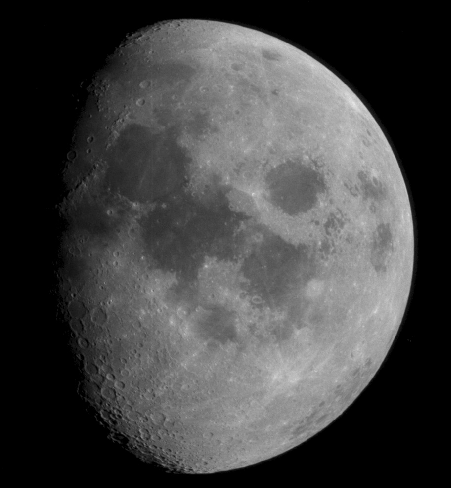
The next lunar image chosen here is AS11-
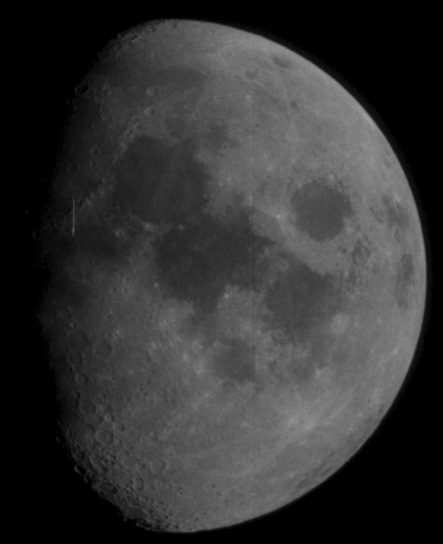
The first is that the NASA fraudsters are so stupid that having got it absolutely bang on so far they slipped up on the way home and just stuck any old photographs of the moon in there hoping no-
The second is down to camera settings. At the same time as they are photographing the moon, they are taking photographs of the much brighter Earth, an Earth that is very obviously dark in the images. My contention is that the settings they are using to photograph Earth without over-
It’s also possible that increasing distance and different lens use has caused less sharp focus and poorer image quality, contributing further to the discrepancy, but my money is on the camera.
I’m sure there will be those who will try and make some capital from this apparent issue, but in so doing they would still have to explain how this one magazine of film contains photographs of the moon that could not be taken from Earth, and also contains photographs of Earth taken on the day they were claimed to be taken, from space.
That will do for Apollo 11. There are enough photographs here where the timing is corroborated by the sequence of events at the moon, and by other evidence presented elsewhere on this site, to show that the lunar terminator moves over the course of the mission consistent with the mission timings.
Later on the 17th, they made a TV broadcast, although the time in GMT makes it the 18th. This youtube footage shows the TV broadcast, as compiled for troops in Vietnam, and it is possible to compile several screenshots to puck out the areas of the lunar surface covered by the Apollo camera. The actual coverage focused on the area of Mare Nubium, and picks out several major craters, eg Alpetragus and Arzachel. On the terminator, the also pick out a group of surface features near Guericke. The screenshot compilation (below left) shows the latter group. While the VMA screenshot shows where the terminator should be at 04:30 GMT on the 18th.
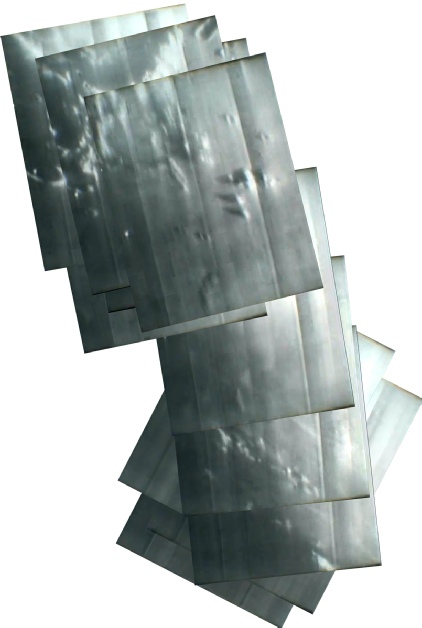

Once established in lunar orbit, better quality photographs are taken, and one featuring the terminator is AS12-
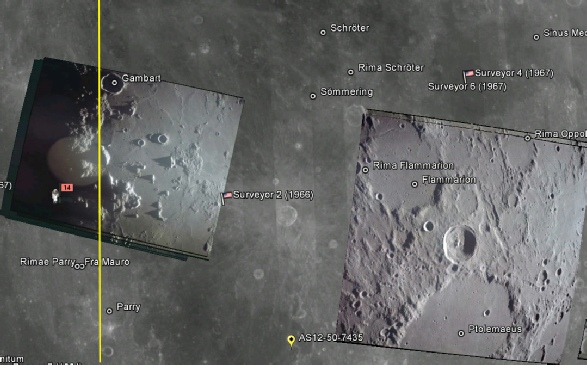
While there aren’t any specific references to photography at the time chosen, they are evidently in orbit, which puts it beyond the LOI burn that took place just short of 04:00 and the lunar terminator has moved on since the view taken in the TV broadcast. The surface area covered and the curvature of the horizon also suggests that it was before the orbit circularisation burn at 08:10, which reduces the ellipse of the initial orbit after LOI and also reduces altitude. Thankfully, our resident pseudoscientist Brian has pronounced himself happy with this photograph -
We have a similar view presented in Magazine 51. In this collection we have 2 sets of terminator photographs (some at evidently high altitude) separated by an oblique sunlit shot of Davy crater. We also have a photograph of Earth (AS12-
The first set of terminator shots show Parry crater, close to the Fra Mauro landing site chosen originally for Apollo 13 and ultimately explored by Apollo 14. One of the Apollo photographs is shown below left (AS12-

After the photograph of Davy crater comes another photograph, this time showing a deeply shadowed Copernicus crater: AS12-
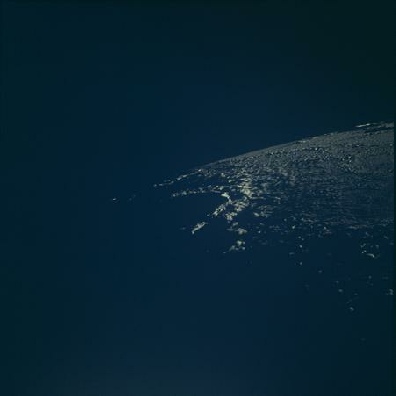
Not much happens for a while, unless you count undocking the LM from the CSM and the whole landing on the moon thing, and the next time we have any photographs of the terminator to examine comes during the use of the Lunar Multi-
One of the magazines from S-
It is shown below left plotted in Google Moon. The white line shows the terminator as estimated by LRO, while below right is the LRO screenshot itself.
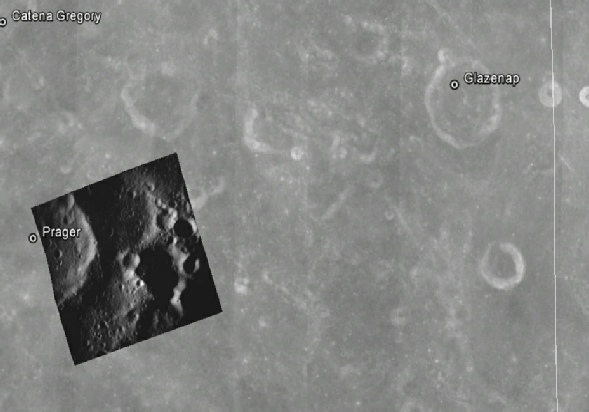
While the Apollo photograph is not at the terminator, it is clearly not inconsistent with the terminator’s position at the time the S-
The next available terminator photography again comes from pictures taken in series, in the form of photographs taken for stereoscopic purposes. This was carried out after the astronauts were re-
As with the S-
The photographs in question are on Magazine T, and the far side terminator comparisons are shown below.
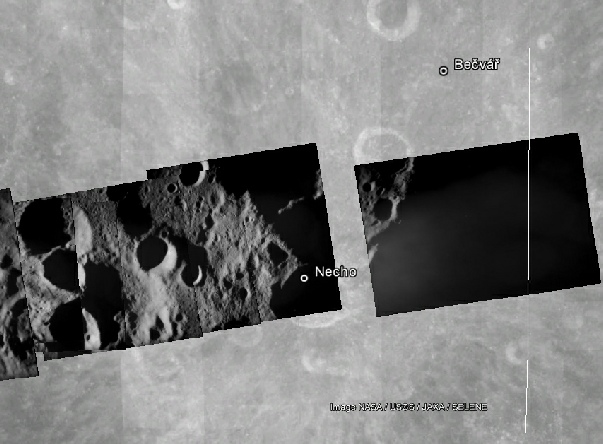
The first thing to note here is that the terminator has moved on since the previous set of strip photographs, and not only that it has moved on a way that is entirely consistent with what would be expected. Once again the photographic record and the transcripts are entirely in agreement.
As far as the other end goes, again the terminator is exactly where it should be.
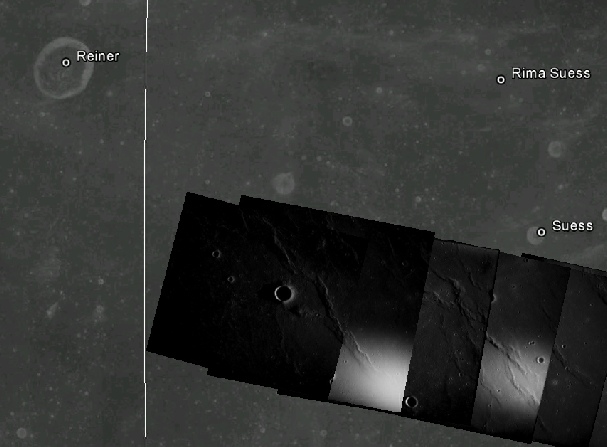
Later on in the magazine we have another terminator photograph, again corroborated by photographs of Earth, this time a series of Earthrise photographs dated at 12:00 on the 19th. The picture in question is Marconi, on the far side, and is AS12-
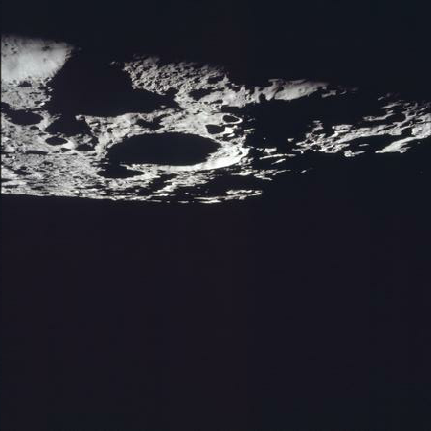
There are photographs taken before the Earthrise in the same region, for example AS12-
The photograph shows a similar area to the previous photograph, and Marconi is the largest crater centre-
Although the differences are small (consistent with one revolution’s worth of time passing), Marconi is not lit the same in the two photographs. More of the inner crater is lit in the earlier one than the later one -
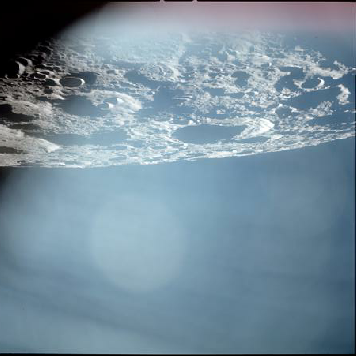
More than one stereo strip was taken, and another set is recorded in Magazine EE.
This magazine doesn’t show a terminator to terminator strip, and the transcript gives us a clue from revolution 44. They discuss camera problems they’d had when trying to photograph targets of opportunity, and the suggestion is to start the stereo strip but terminate it at a point that would allow them to continue their other photographic work. A time of 16:20 on the 21st (based on the transcript timings) has been set for the VMA, and the Google Moon and VLRO screenshots are shown below.
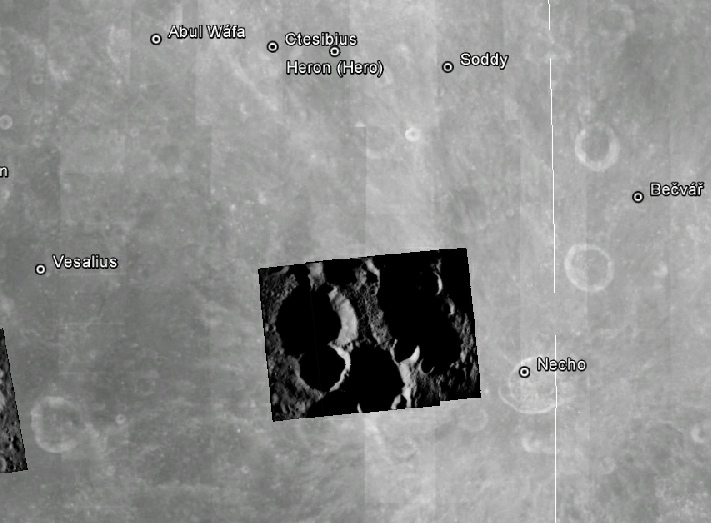
The stereo strip’s start overlaps that of the one shown from Magazine T, and you might want to scroll up so that you can compare the two. Just in case you miss it, these photographs, taken a day later than those of the same place, show much darker craters than before, and once again it is consistent with the mission transcripts and the passage of time.
Before the start of the stereo strips there are a few photographs of the near side terminator. The first of these is AS12-
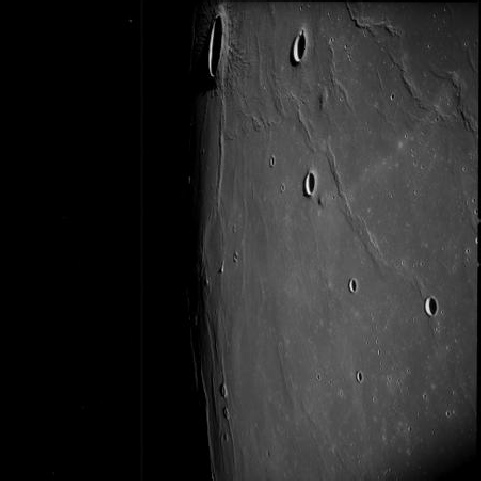
There are two things to note here. Firstly, the terminator is in a consistent location in terms of the LRO’s prediction. Secondly, there are parts of this image that are much better lit than in the transect from Magazine T, which is exactly what you would expect. We get a similar view of this area in Magazine S, which has several shots at the end of the magazine taken around the Renier region, some pointing towards the terminator area, for example AS12-
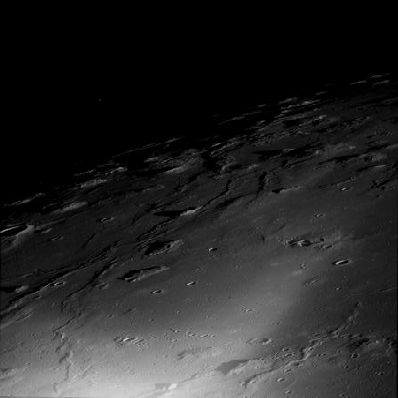
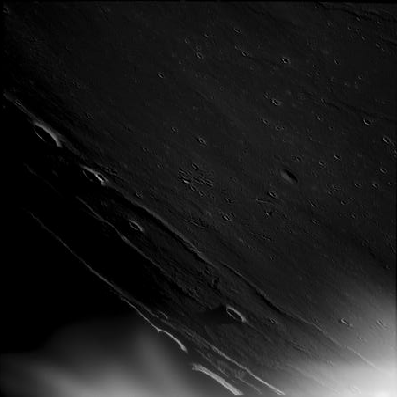
The next set of images that show the lunar terminator are all taken after TEI (which took place at around 20:50 on the 21st), and include those from a TV broadcast made between 21:07 and 21:45 on the 21st. Magazine EE, used earlier, has images of a retreating moon evidently taken after TEI, and the first photograph showing a full disk is AS12-
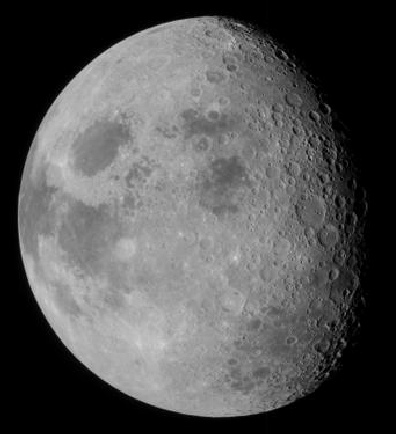
The TV broadcast at the same time as this photograph was taken shows the same scene, and now that the returning craft has emerged from the signal blocking effect of low orbit viewers on Earth were treated to a view of the far side that they would never normally be able to see. This youtube video features a couple of views of the moon broadcast on US TV on the 21st. It’s worth pointing out that the timestamp on the video is not local or GMT, it is the timestamp of the video itself. These views are shown below. Cantor crater has again been identified with a red dot.
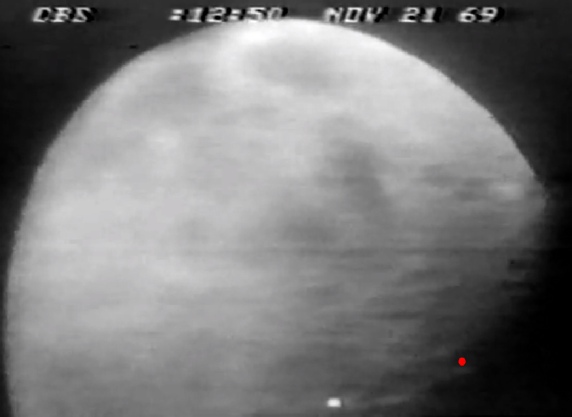
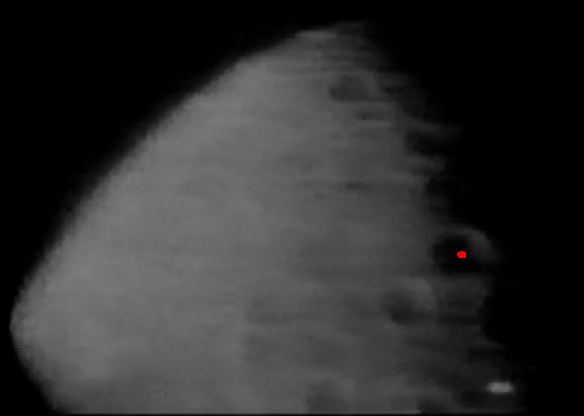
The crew continued to take photographs, and we an compare the last one in this magazine (AS12-
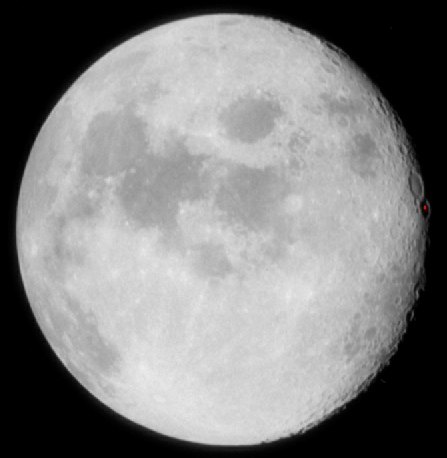
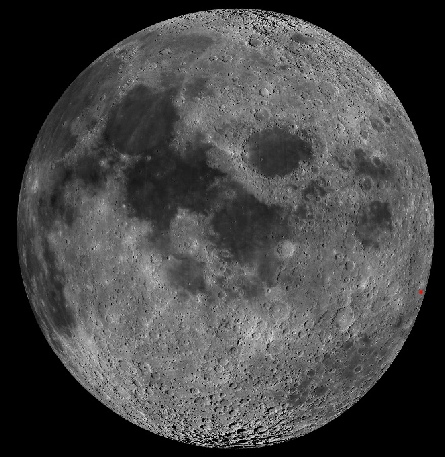
Another mission dealt with, and another set of photographs showing complete consistency with what software models predict should be visible, and with what the mission transcripts record.
No close up photographs exist of the terminator from Apollo 13, so the next section will look at Apollo 14 and 15.



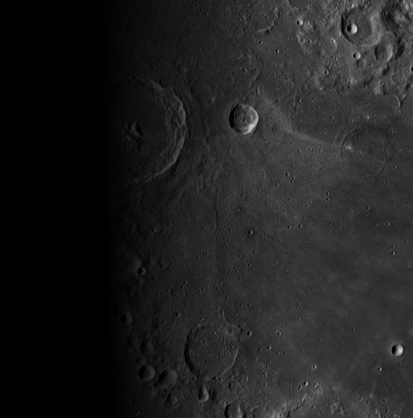
Looks like a pretty reasonable match to me.
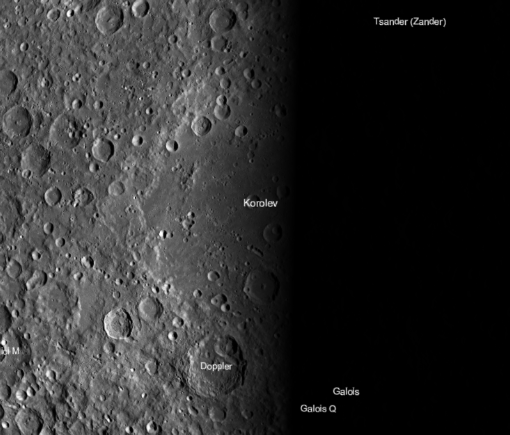
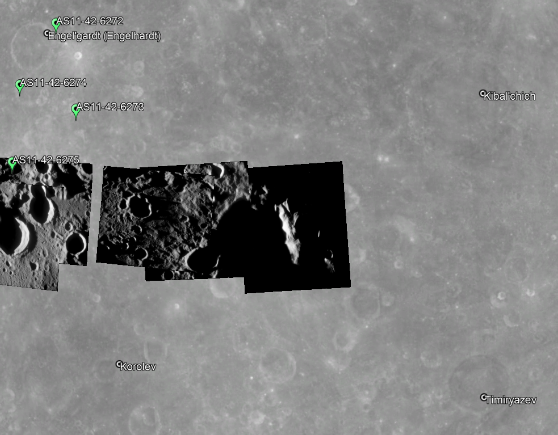
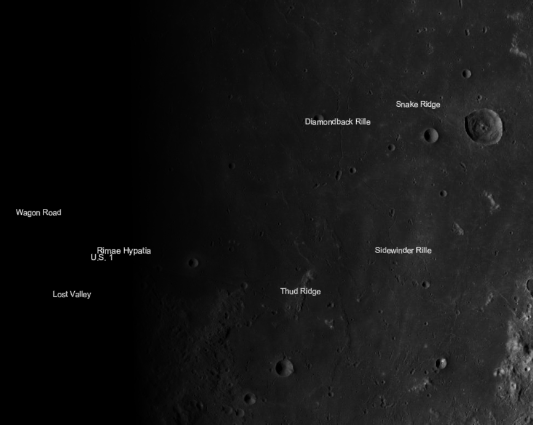
The key crater here is Moltke, which can be seen towards the centre bottom of the Apollo photograph just to the east of a ridge of hills. The same crater is labelled in the LRO image towards the bottom left. The crater in the top right of both images is one of the Maskelyne group. The large engine bell feature in the bottom right of the Apollo photograph is often mistaken for the Command Module shadow, which would be impossible. It is in fact one of the much smaller thrusters used to make small adjustments to trajectory and/or attitude.
While Aldrin does not specifically state that he has taken a photograph, the crew spend the next few hours in serious preparation for the landing, and the terminator has moved considerably more westwards by the next time a specific reference to the site being in view is made.
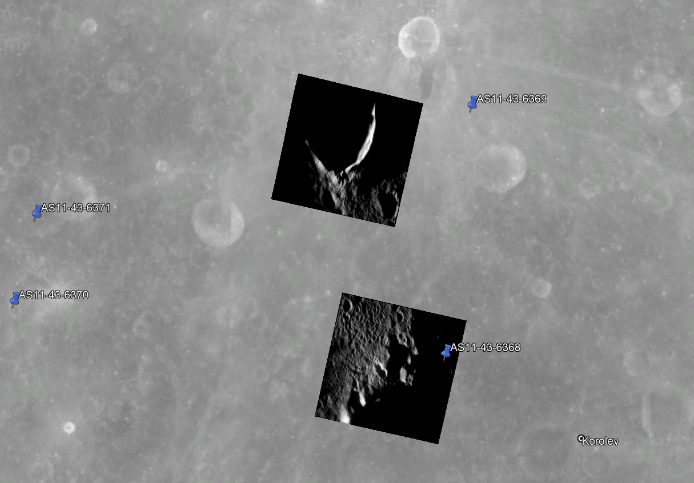
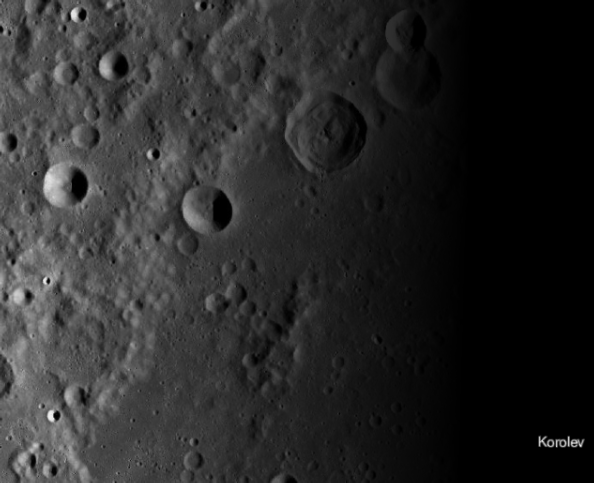
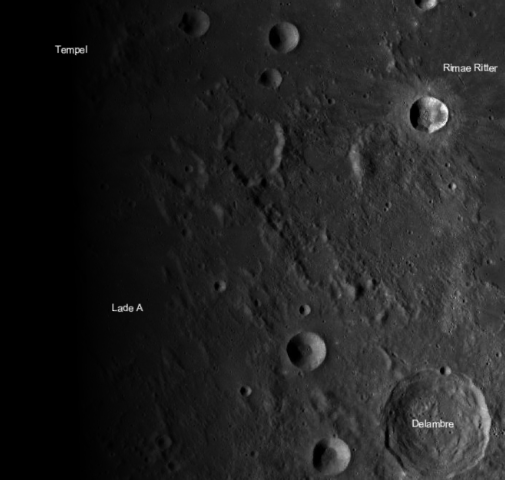
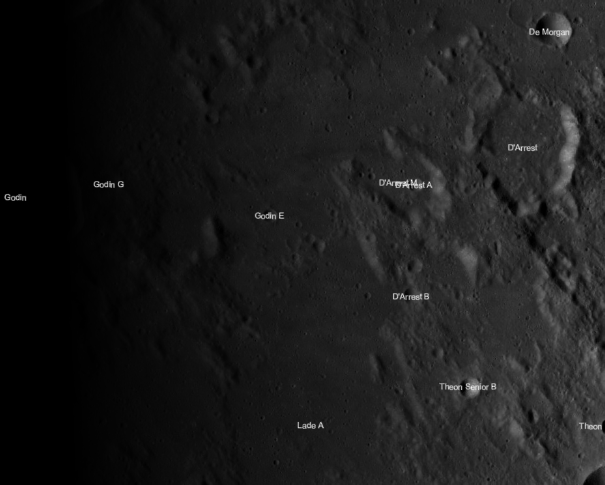
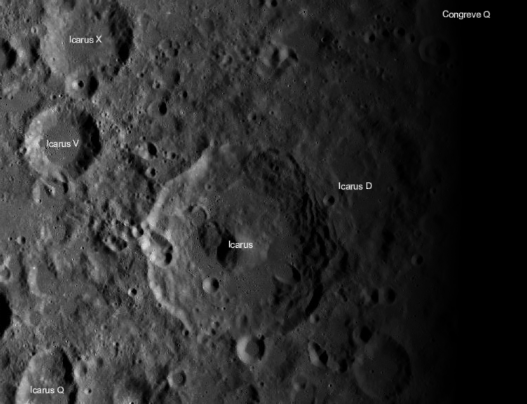
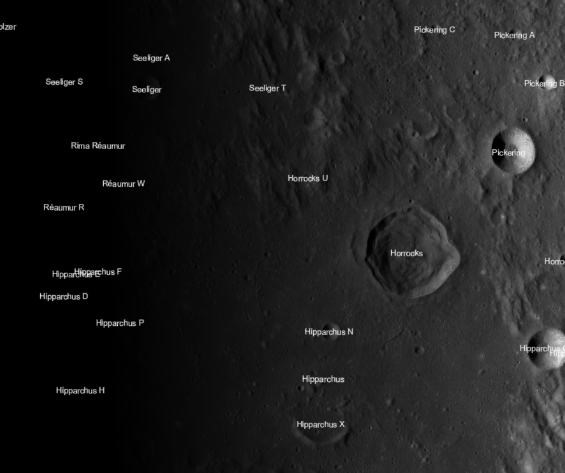
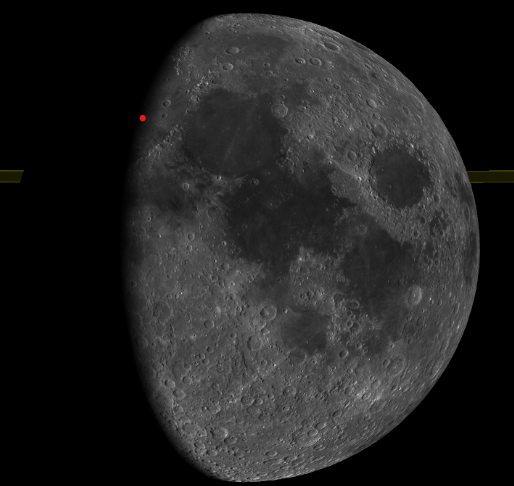
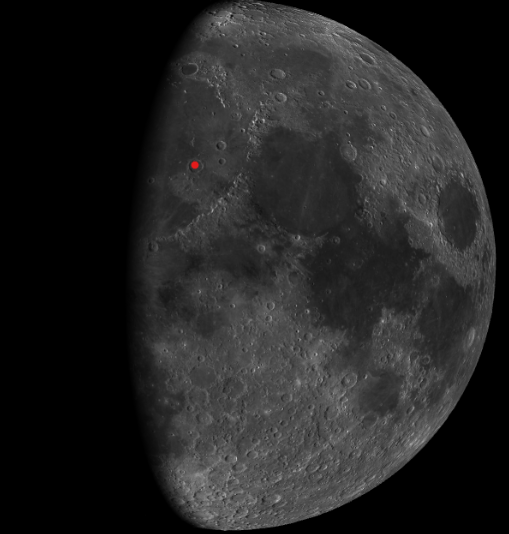
The terminator has been set at 08:00 on the 22nd, based on its position just west of Archimedes crater (the red dot on the VMA image).
This series of lunar images gets more interesting when they are interspersed with those of Earth, where we also have precise timings.
To do all of them would be a trifle repetitive, so we’ll stick with the last one where details of craters on the terminator are obvious.
Close examination of this latest photograph presents us with a problem. We know that it must have been taken at or just after 05:15 on the 23rd because that time is set by the Earth images either side of it (see here).
However, the terminator on the Apollo image is not as far over as it should be according to the LRO. In fact, it appears to have hardly moved.
How can we explain the difference?
There can be two possible explanations for this.
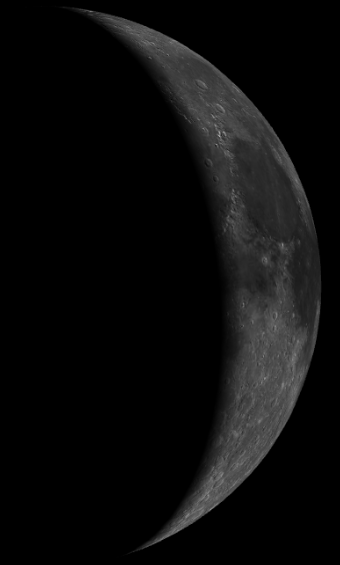
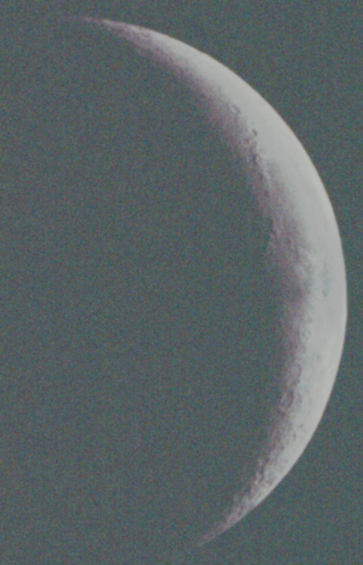
An excellent start -
It should be pretty clear that the terminator shown by the VMA is matched by the TV footage, and the long shadows of those features standing proud of the lunar mare are further evidence that the Apollo TV broadcast is a match for what would be expected at that time.
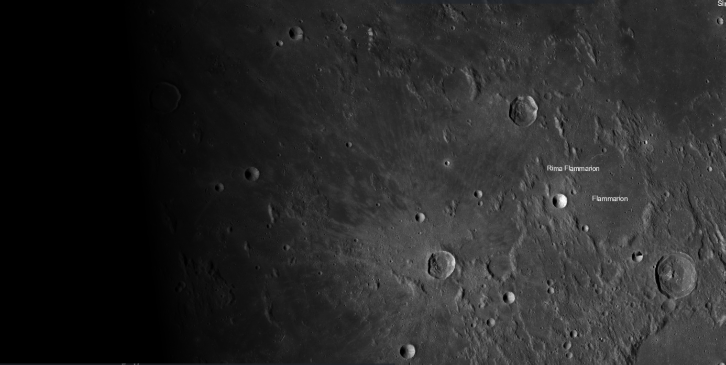
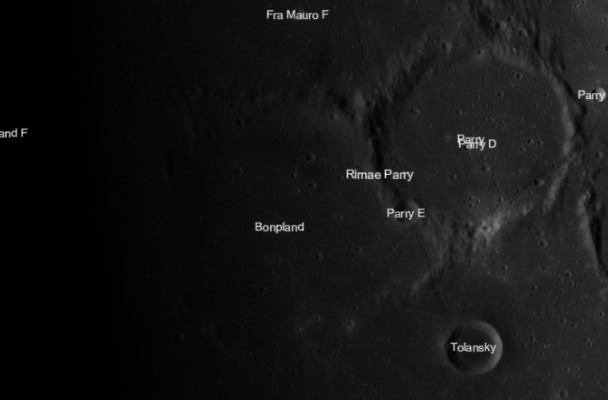
That looks pretty reasonable to me, give or take a few minutes.
Again there is a good match between what the LRO predicts and what the Apollo photograph shows.
Based on the photo sequence, I would suggest the photographer looked south to get his Parry shots, briefly eastwards to get Davy, then north to Copernicus before getting the photograph of Earth.
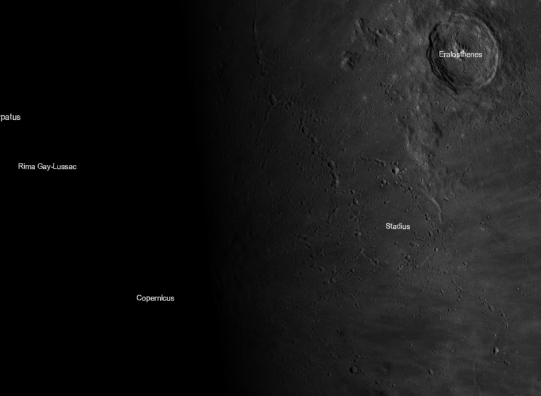
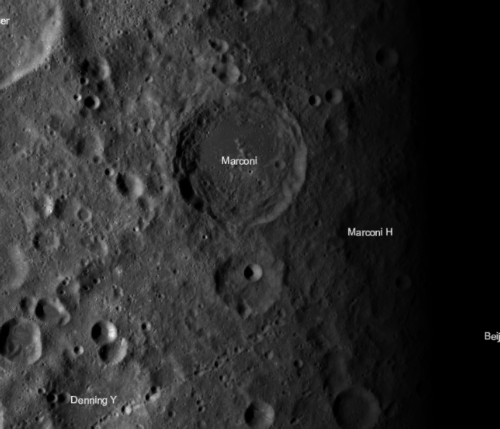
As with other photographs, we are not quite at the terminator, but we are not far away and it looks like my 13:00 estimate isn’t an unreasonable one.
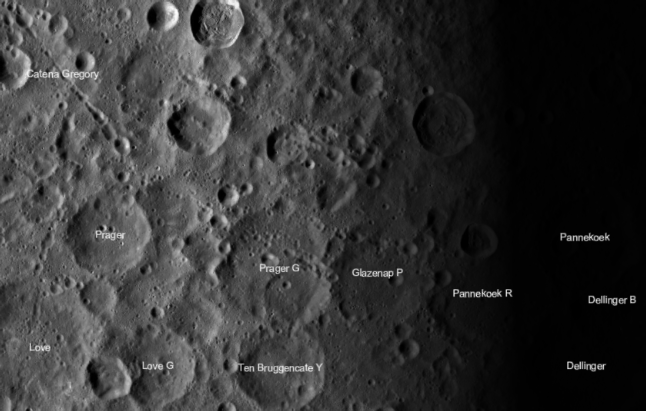
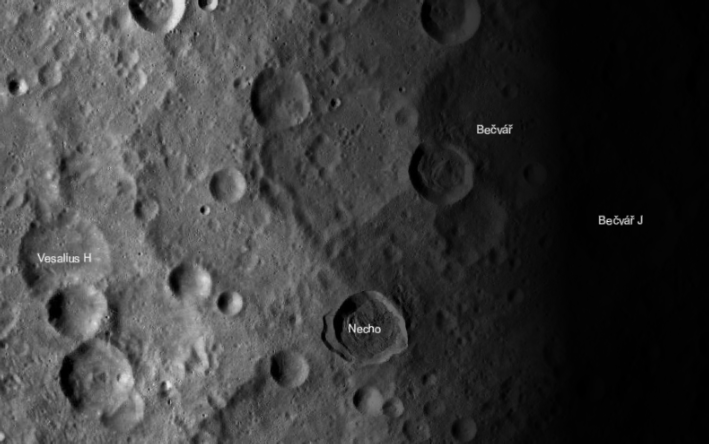
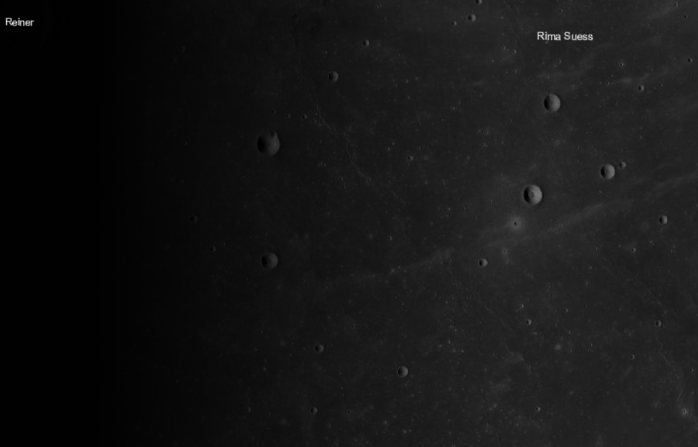
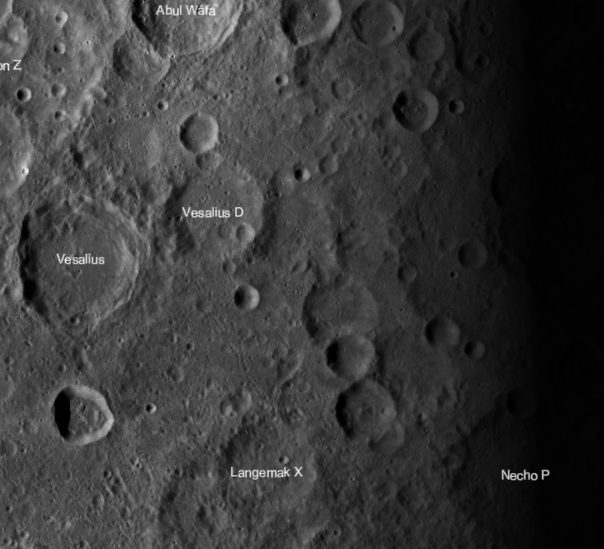
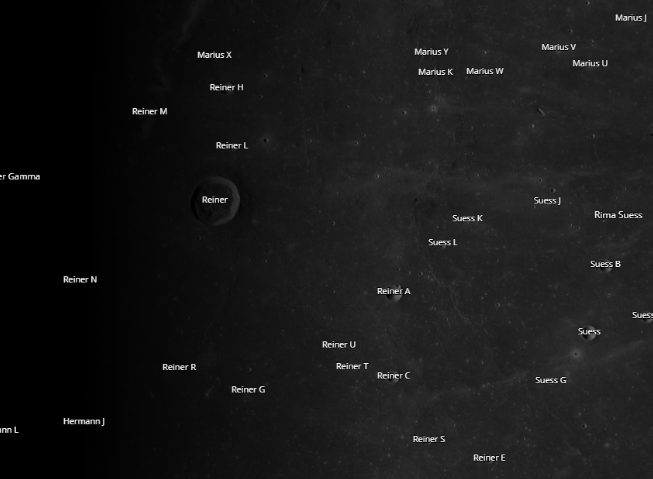
To help with identification, I’ve marked a crater (Cantor) on the terminator with a red dot. Pasteur and Hilbert craters near the equator are also useful pointers. It is again noticeable that the two dimensional representation of the moon at 21:30 on the 21st is not the same as Apollo’s image of a 3D moon.
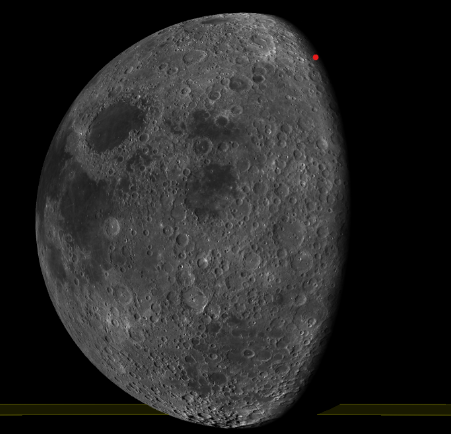
There has obviously been a passage of time and a change in viewing angle, and in this photograph Pasteur and Hilbert (the latter marked with a red dot) are now on the equator. This is consistent with a time of around 14:00 on the 22nd, shortly after a mid-
